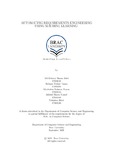| dc.contributor.advisor | Akhond, Mosta jur Rahman | |
| dc.contributor.author | Abid, Md.Mehedy Hasan | |
| dc.contributor.author | Tanna, Rubaya Neshat | |
| dc.contributor.author | Noyon, Mahbubur Rahman | |
| dc.contributor.author | Masud, Jahidul Hasan | |
| dc.contributor.author | Akter, Tahmina | |
| dc.date.accessioned | 2022-03-14T08:24:31Z | |
| dc.date.available | 2022-03-14T08:24:31Z | |
| dc.date.copyright | 2021 | |
| dc.date.issued | 2021-09 | |
| dc.identifier.other | ID 17101033 | |
| dc.identifier.other | ID 17101204 | |
| dc.identifier.other | ID 17101214 | |
| dc.identifier.other | ID 17101418 | |
| dc.identifier.other | ID 17301226 | |
| dc.identifier.uri | http://hdl.handle.net/10361/16453 | |
| dc.description | This thesis is submitted in partial fulfillment of the requirements for the degree of Bachelor of Science in Computer Science and Engineering, 2021. | en_US |
| dc.description | Cataloged from PDF version of thesis. | |
| dc.description | Includes bibliographical references (pages 22-23). | |
| dc.description.abstract | Machine learning algorithms help to automate the process in many di erent problem
domains. In the eld of Software engineering. Requirement engineering is one of the
rst stages of software development. This research aims to automate the process of
requirements engineering by integrating machine-learning algorithms, which should
reduce the development cost and the possibility of human errors in several stages
of the software engineering process. The thesis requires extensive machine learning
algorithms to identify the best-suited technologies in the software engineering arena.
Finally, we will identify some evaluation matrix to identify the e ectiveness of our
proposed algorithms for real-life software requirements speci cation. | en_US |
| dc.description.statementofresponsibility | Md. Mehedy Hasan Abid | |
| dc.description.statementofresponsibility | Rubaya Neshat Tanna | |
| dc.description.statementofresponsibility | Mahbubur Rahman Noyon | |
| dc.description.statementofresponsibility | Jahidul Hasan Masud | |
| dc.description.statementofresponsibility | Tahmina Akter | |
| dc.format.extent | 23 pages | |
| dc.language.iso | en | en_US |
| dc.publisher | Brac University | en_US |
| dc.rights | Brac University theses are protected by copyright. They may be viewed from this source for any purpose, but reproduction or distribution in any format is prohibited without written permission. | |
| dc.subject | Automate | en_US |
| dc.subject | Integrating | en_US |
| dc.subject | Extensive | en_US |
| dc.subject | Identify | en_US |
| dc.subject | Requirement engineering | en_US |
| dc.subject | Software engineering | en_US |
| dc.subject | NLP | en_US |
| dc.subject | BERT | en_US |
| dc.subject.lcsh | Machine learning | |
| dc.title | Automation requirements engineering using machine learning | en_US |
| dc.type | Thesis | en_US |
| dc.contributor.department | Department of Computer Science and Engineering, Brac University | |
| dc.description.degree | B. Computer Science | |

